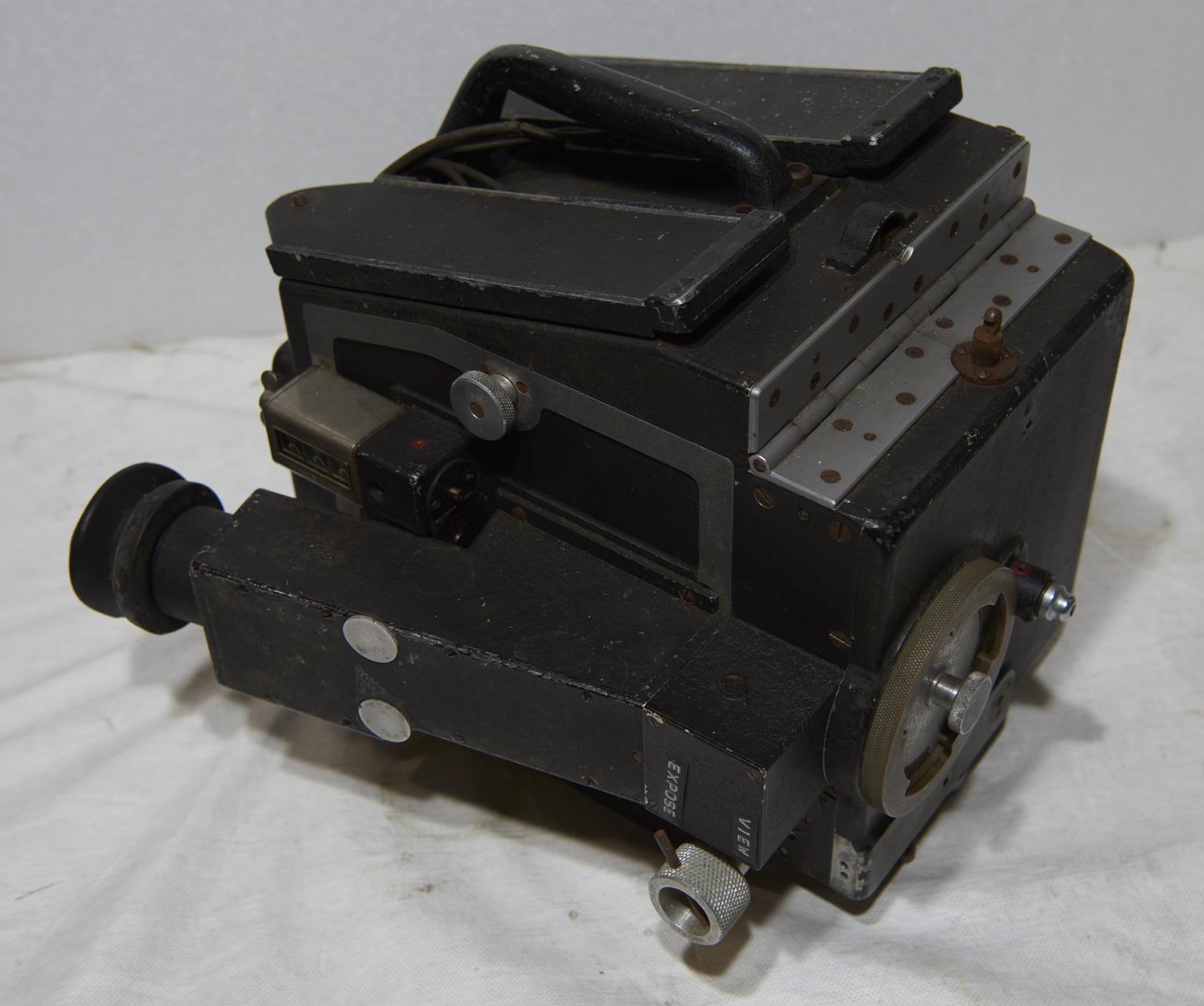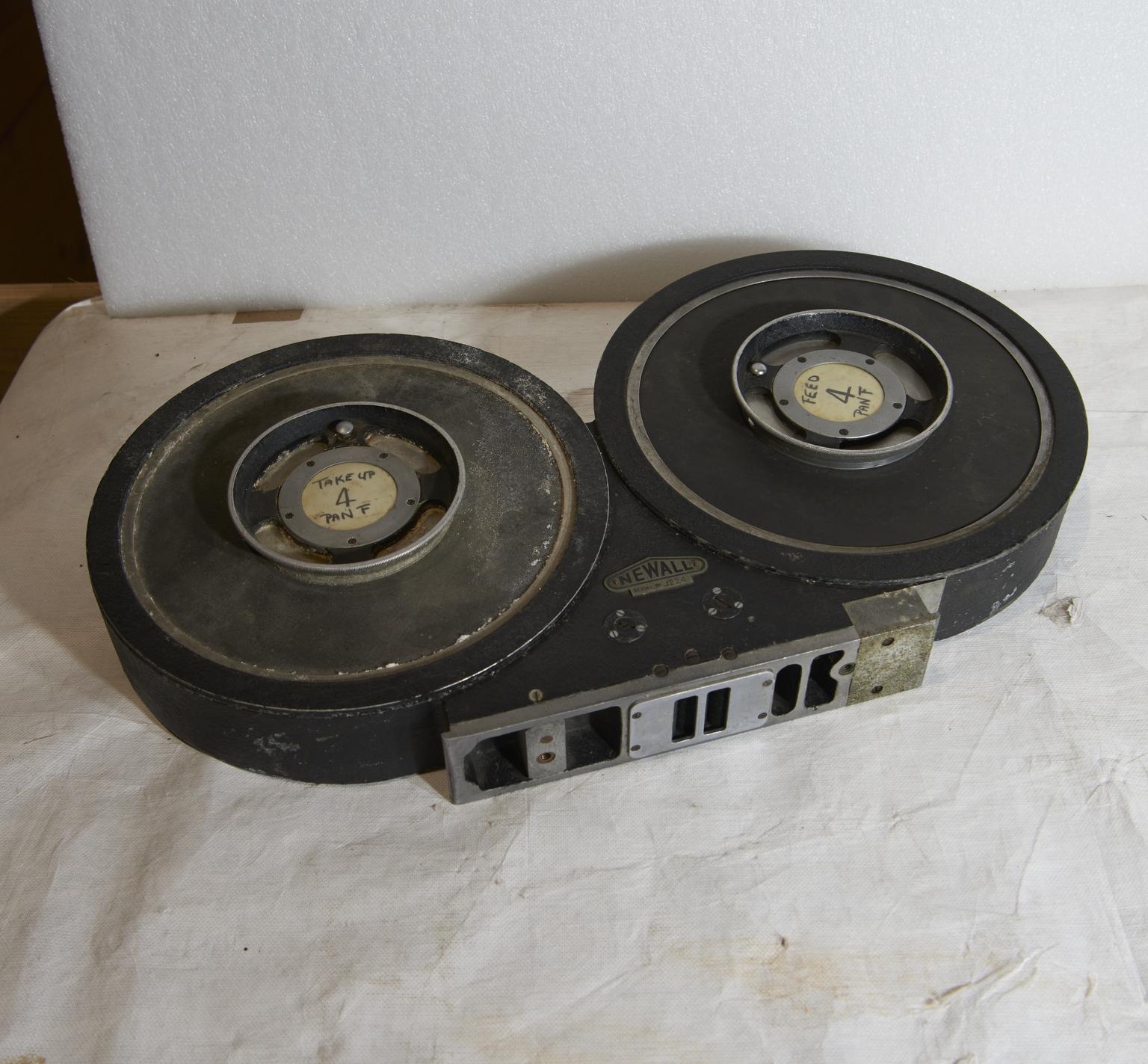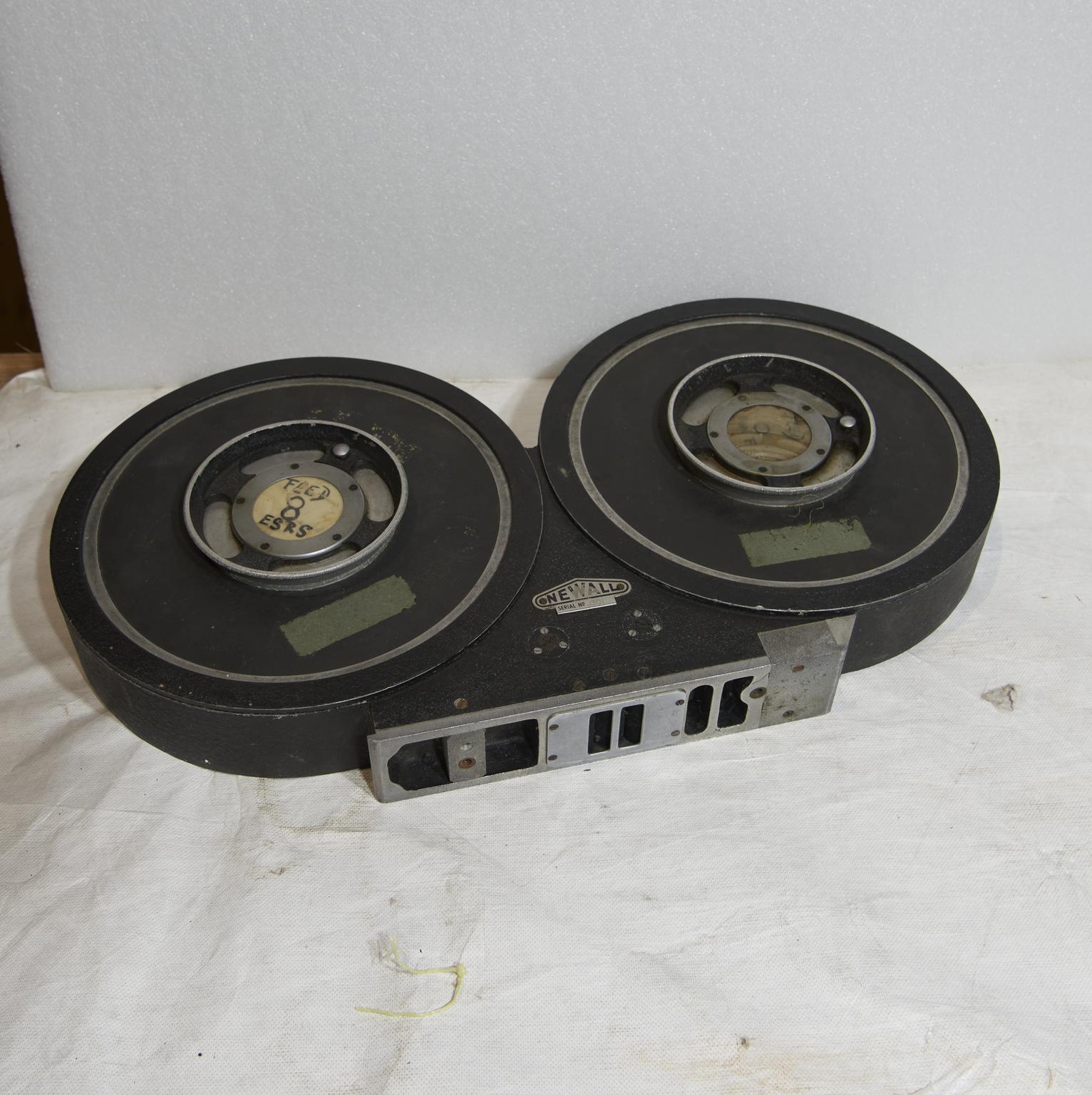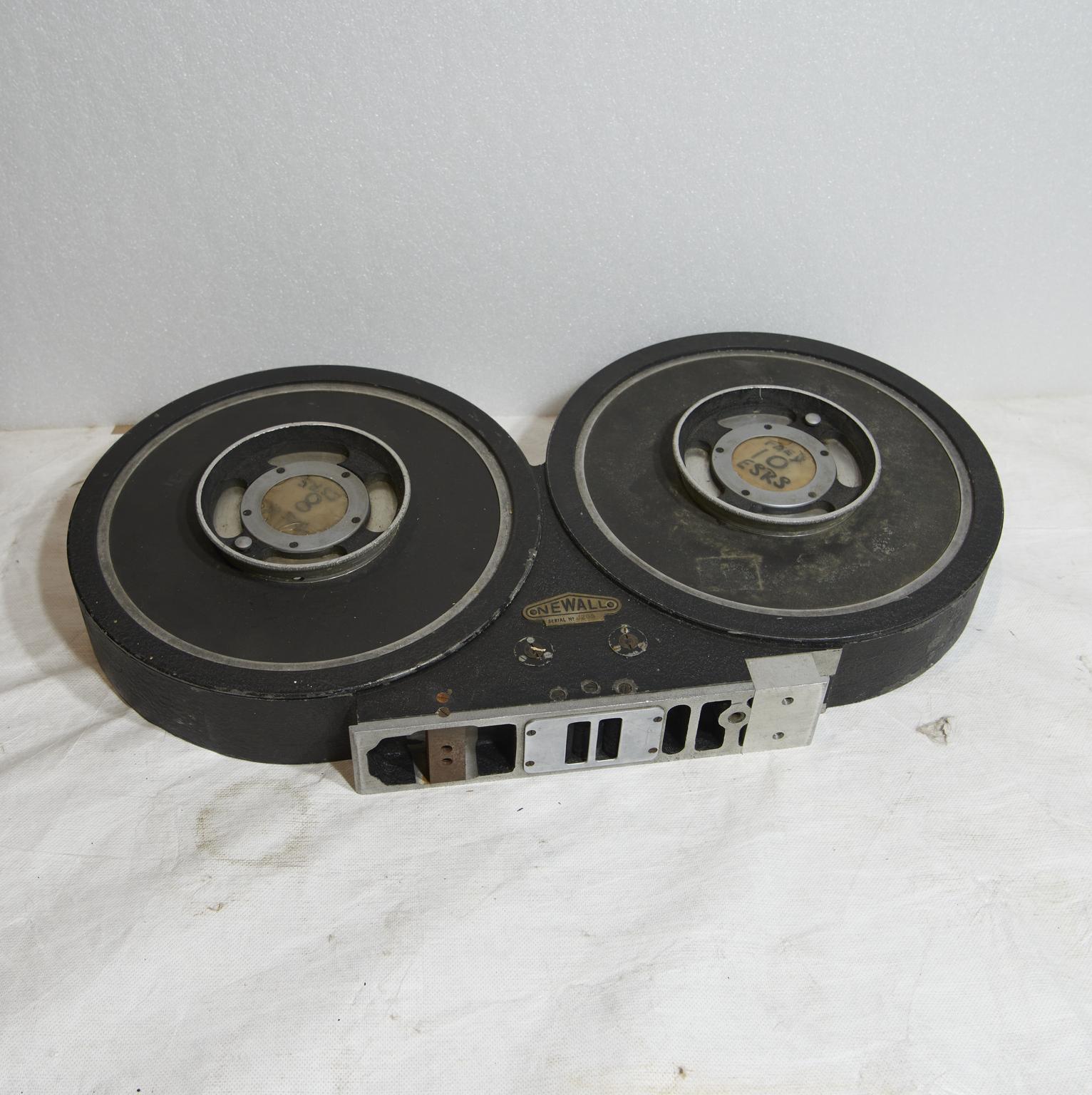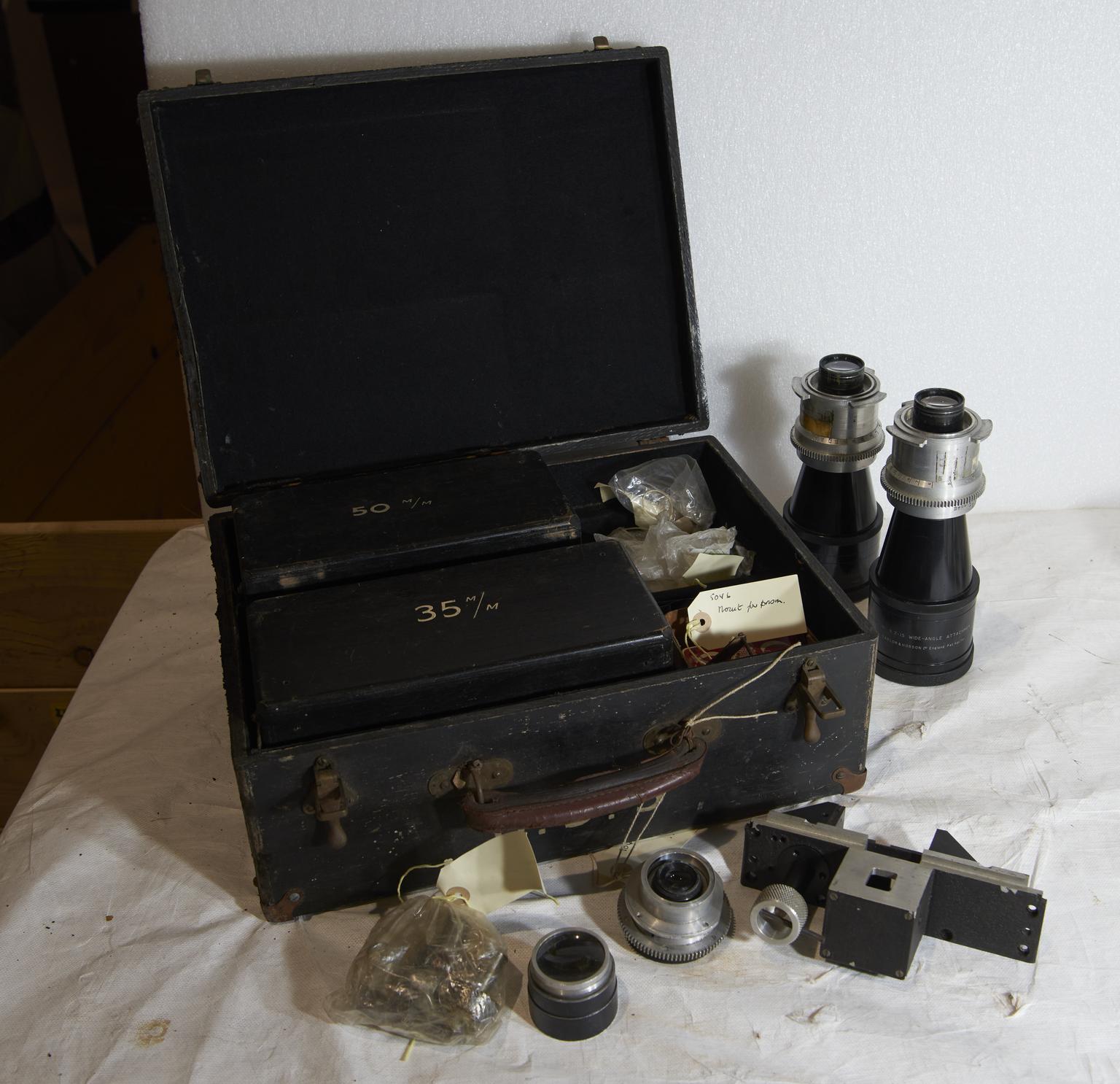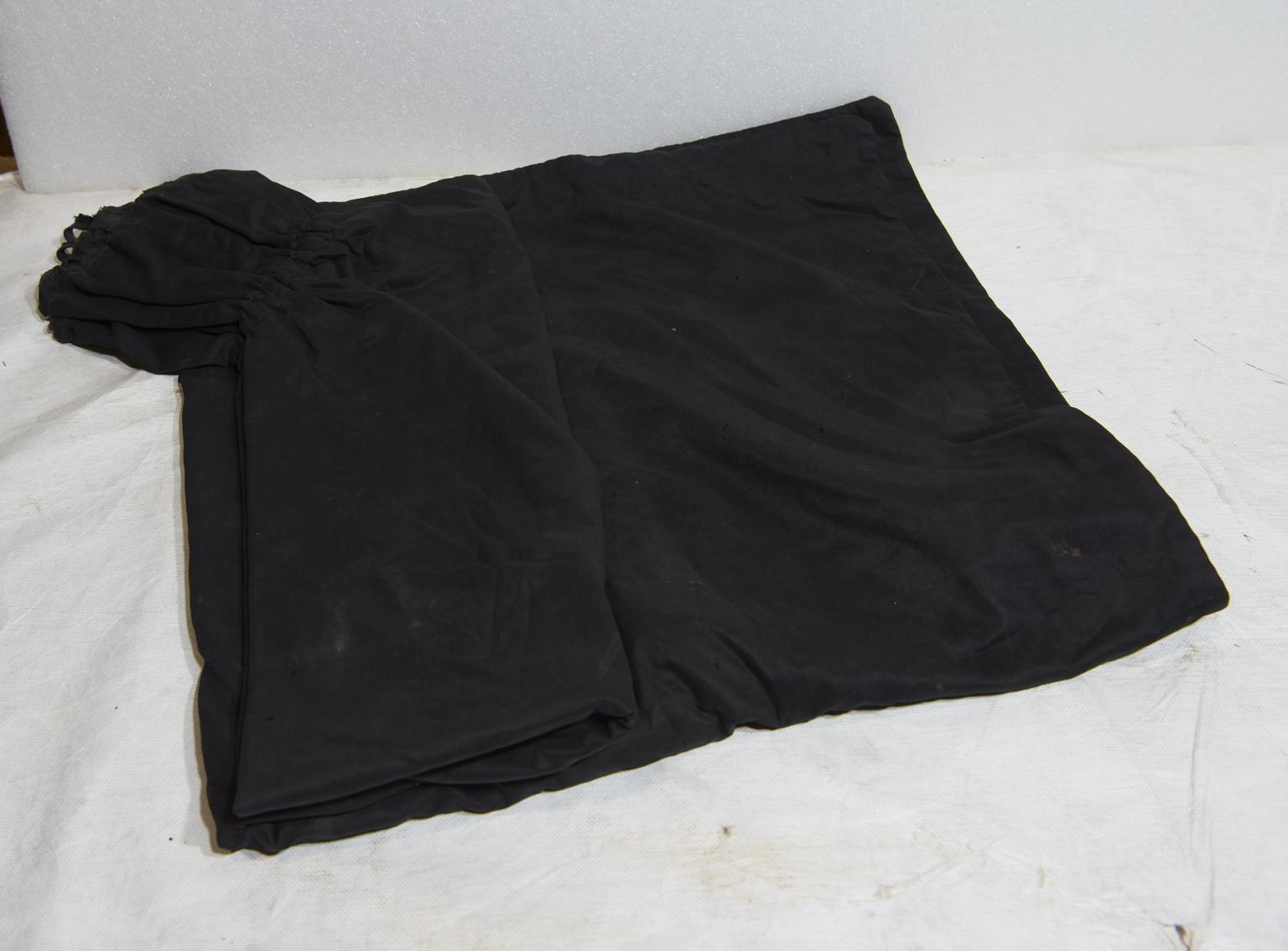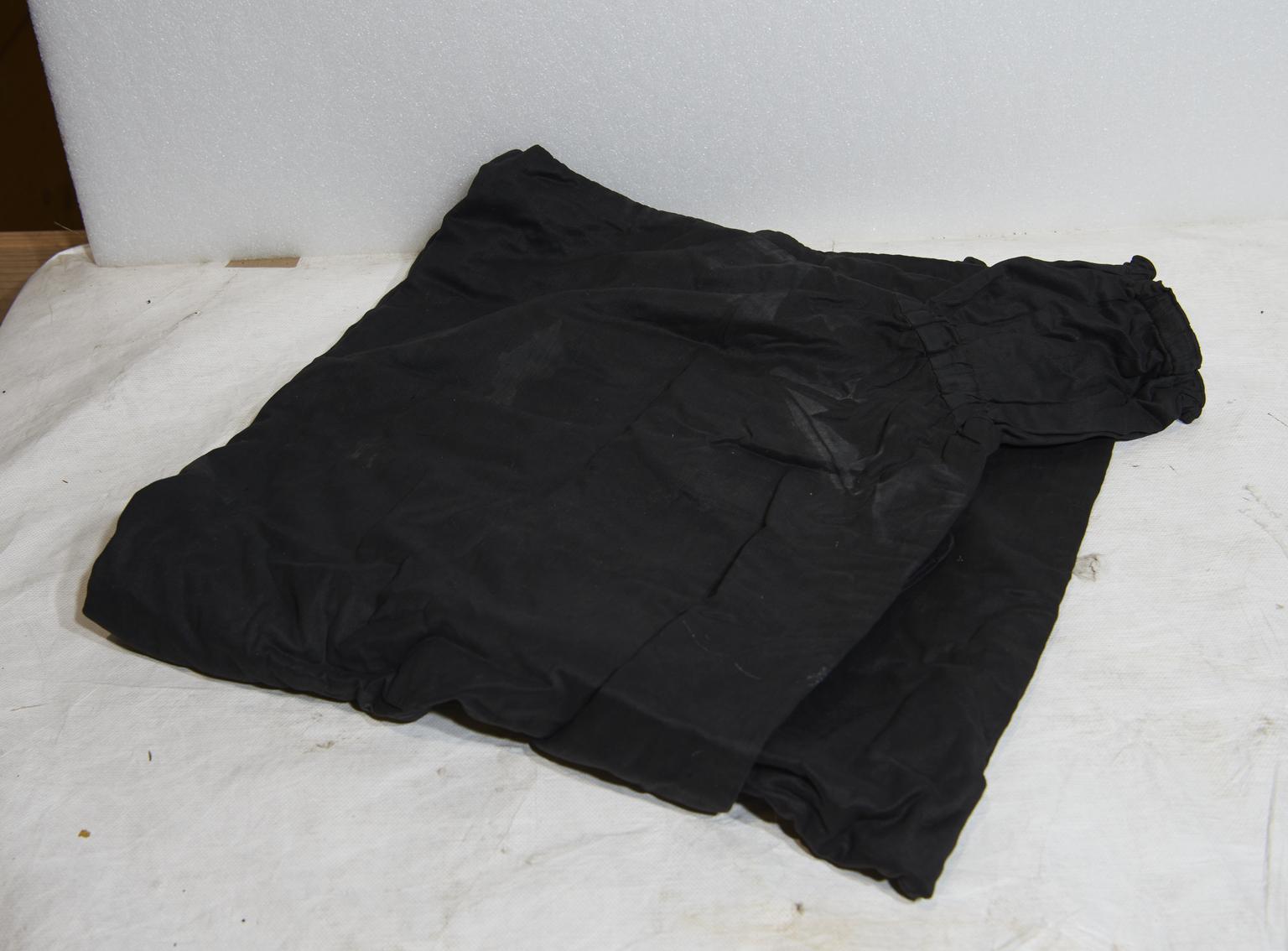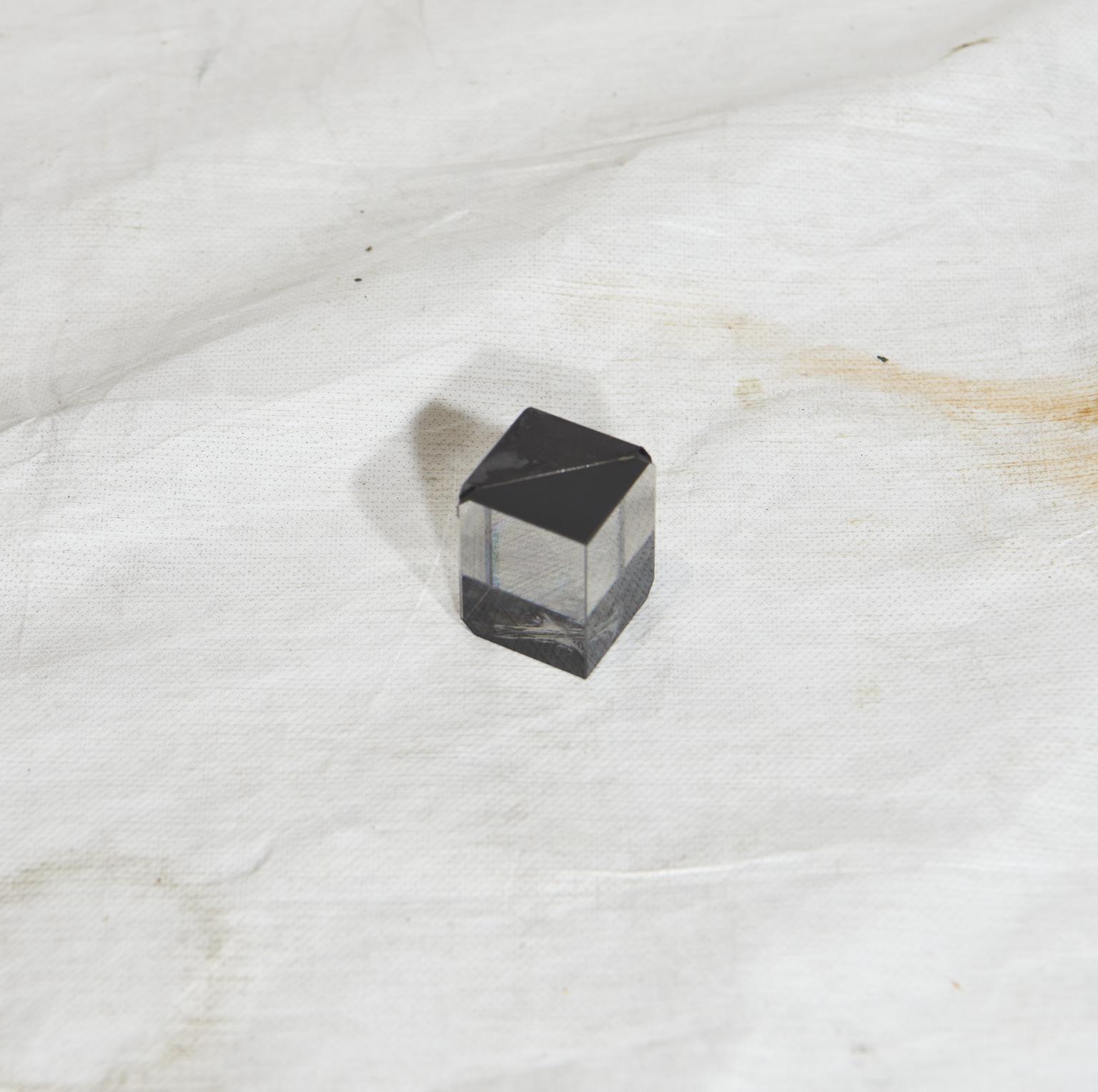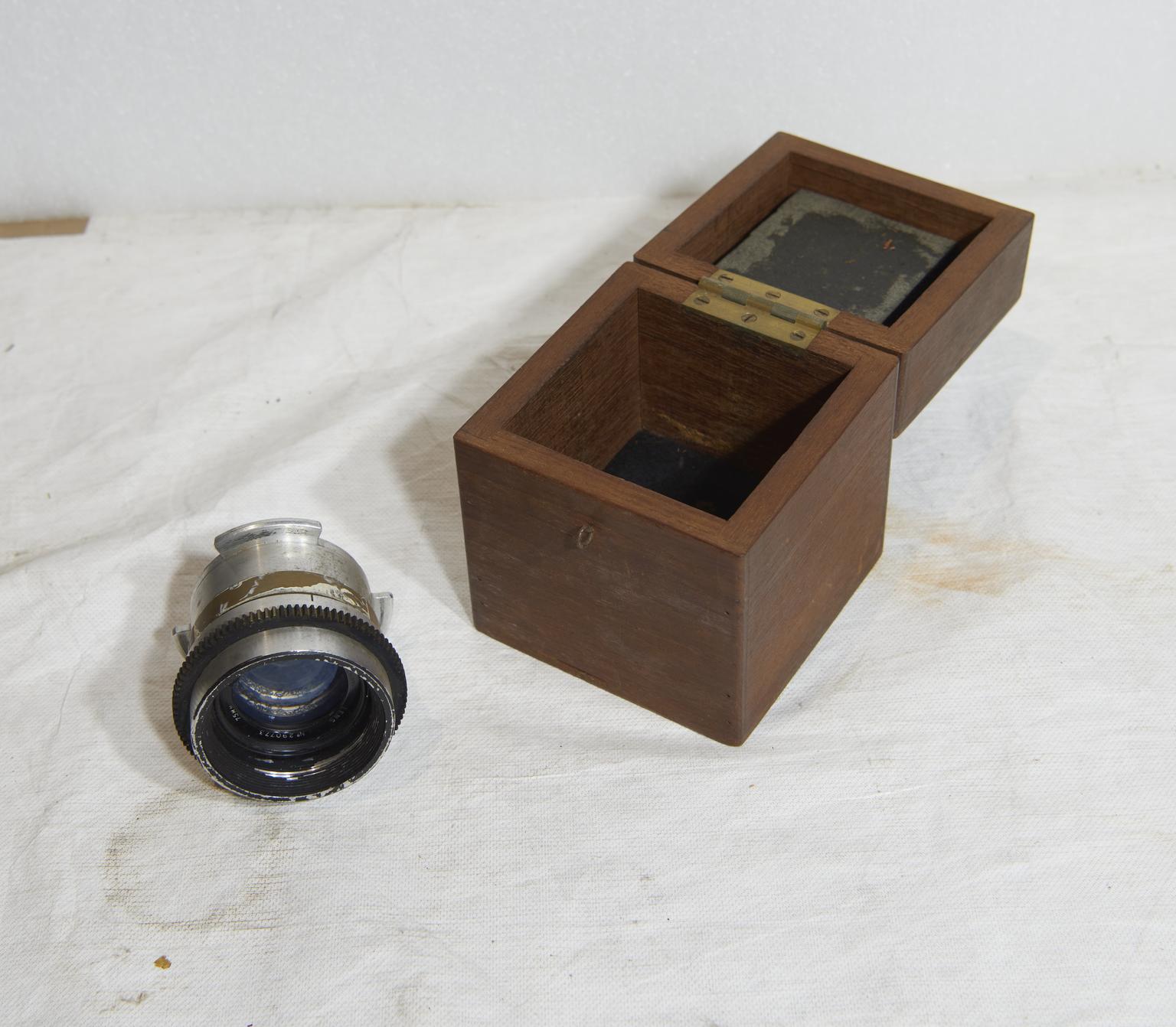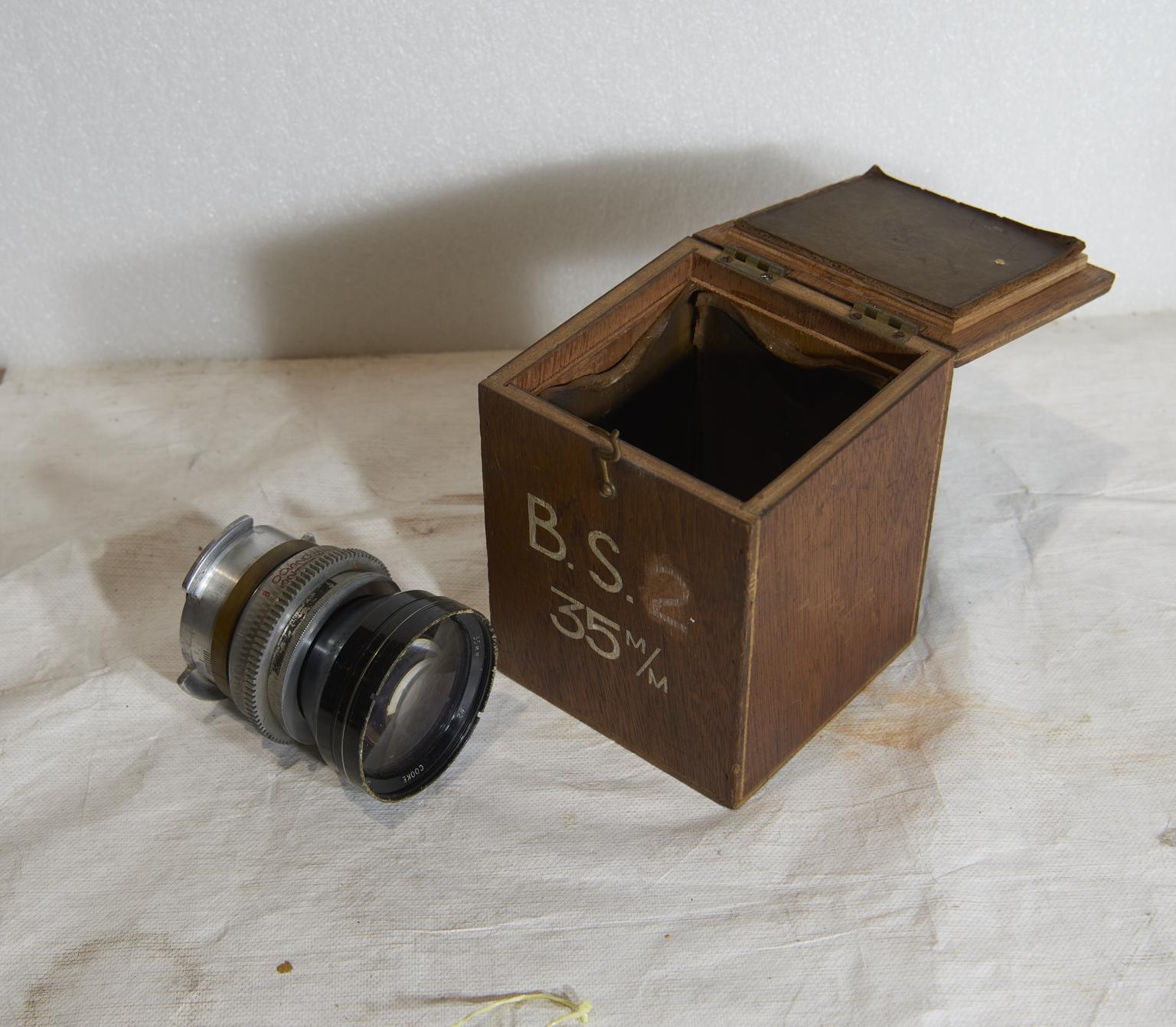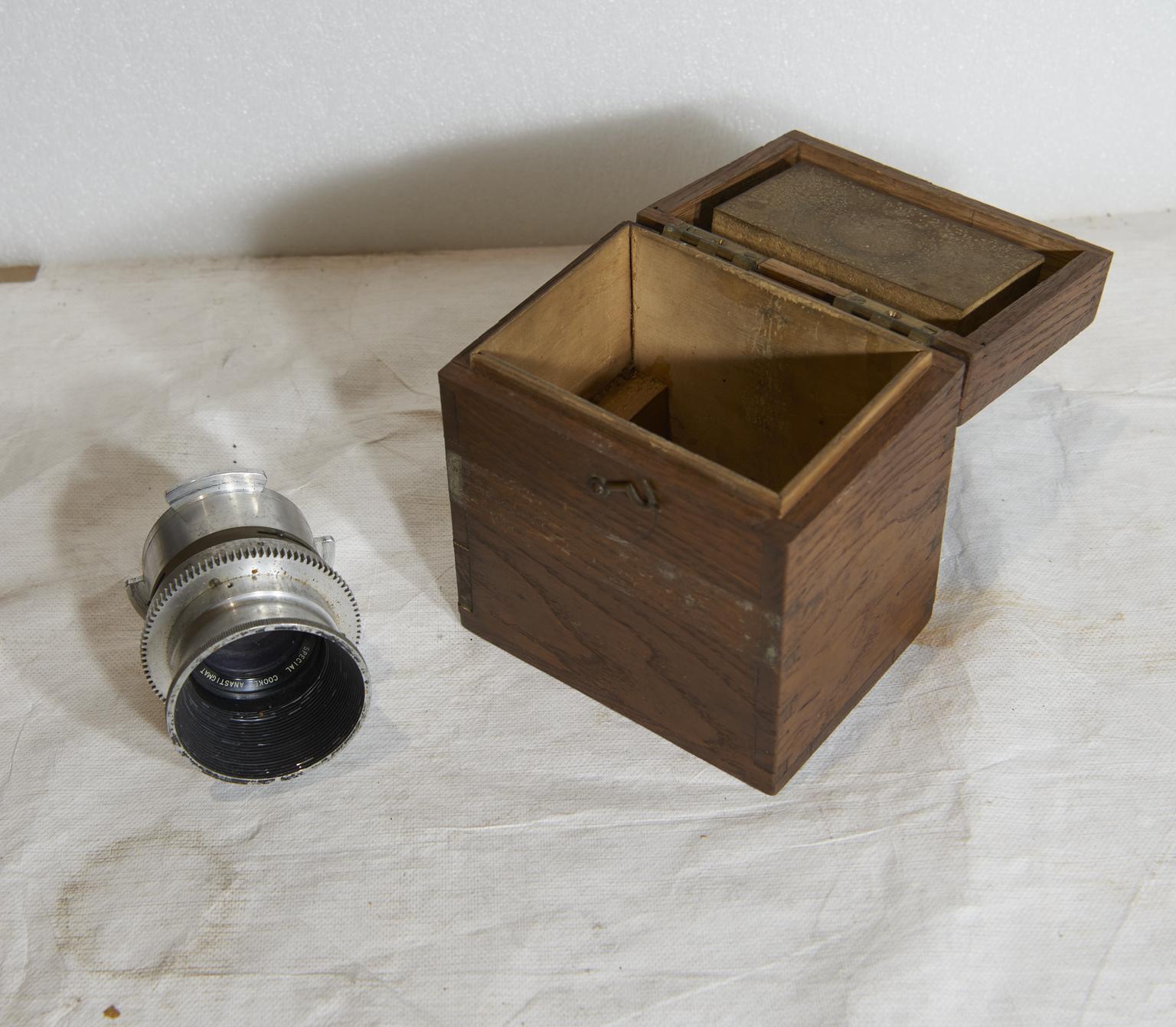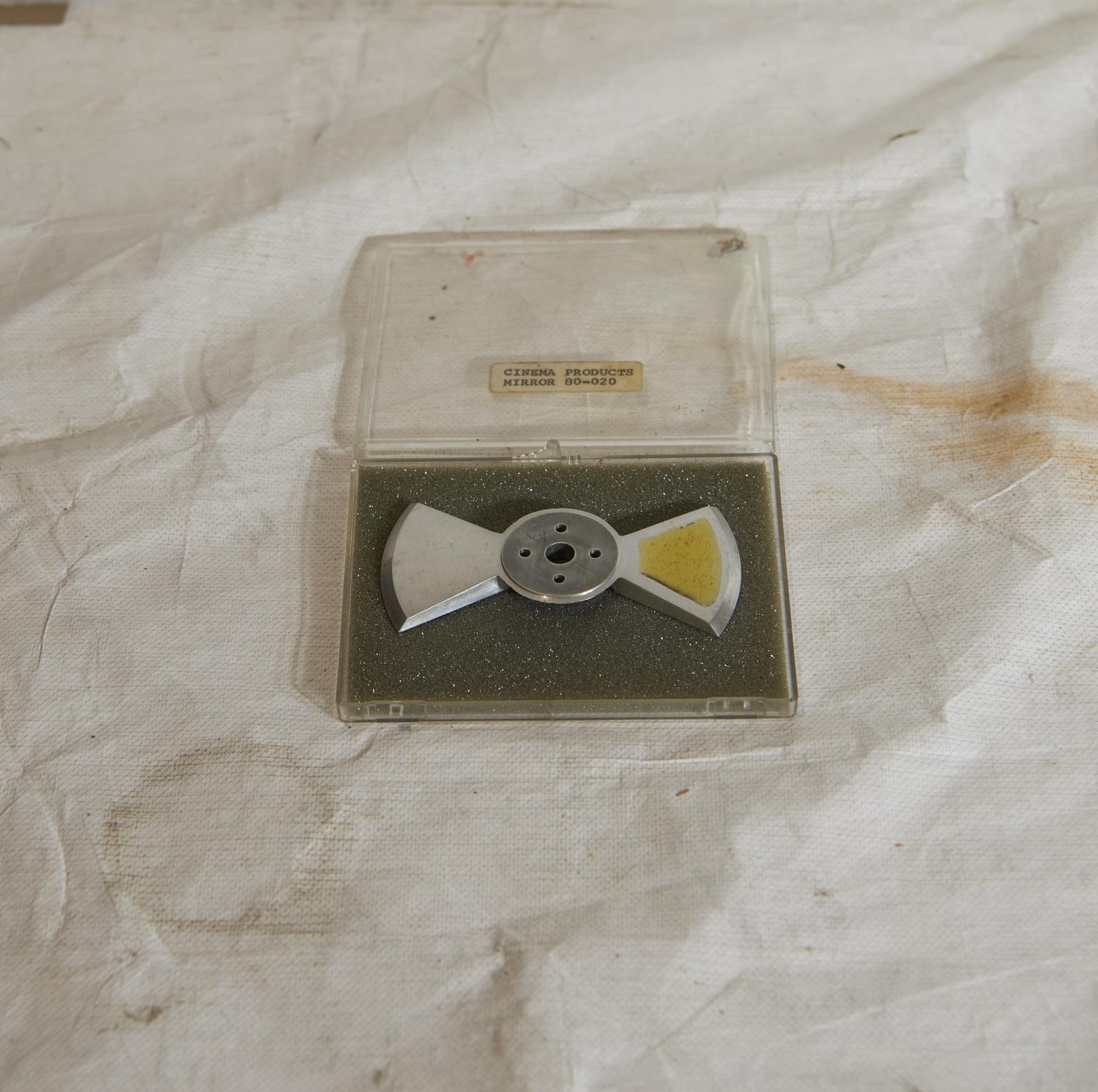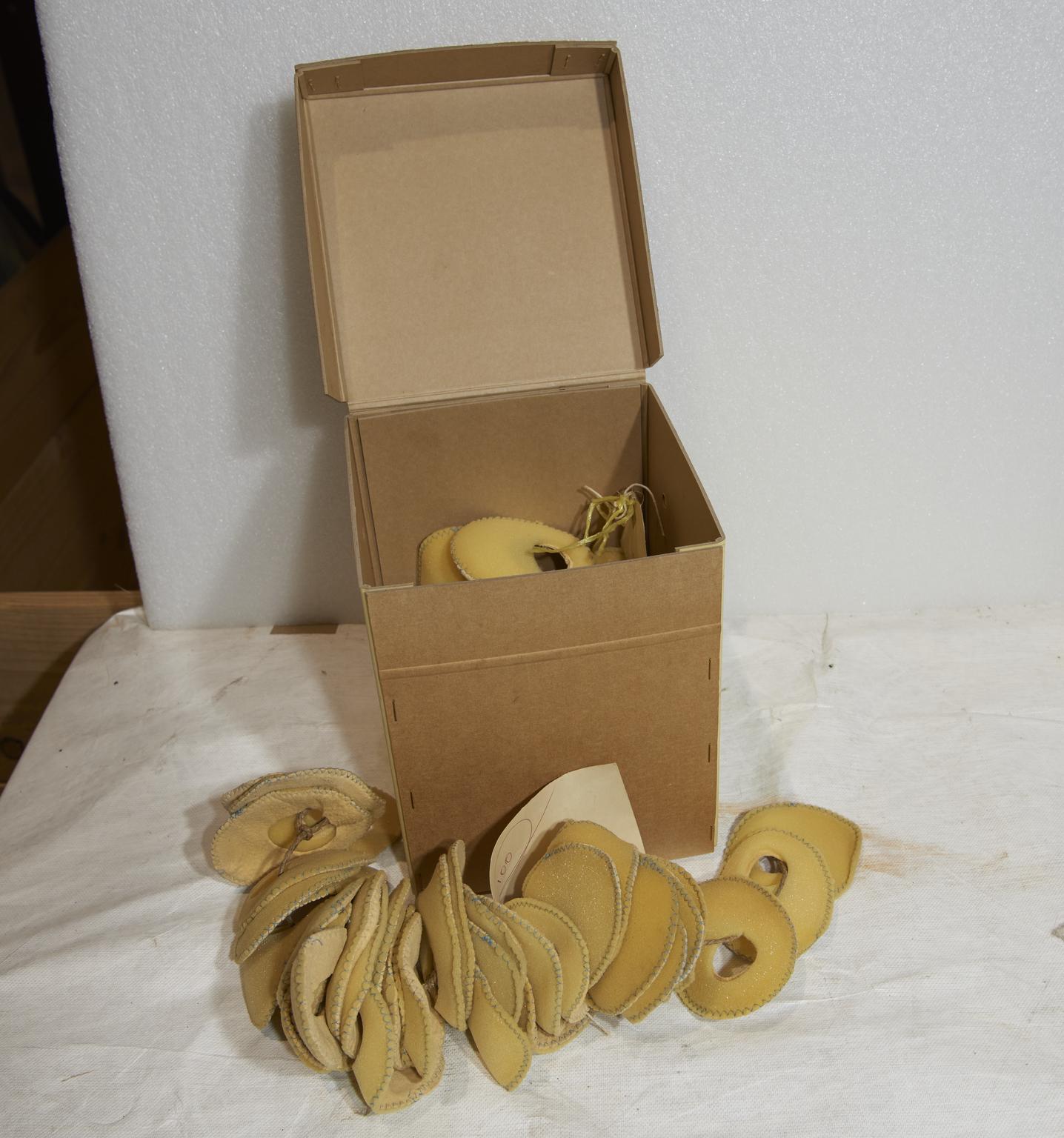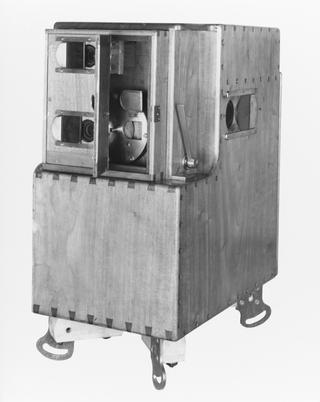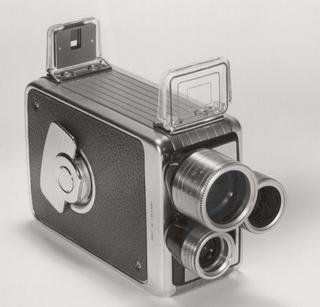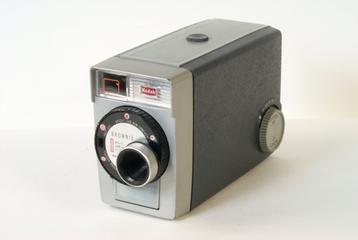
BS 2 Beam Splitter for Travelling Matte Cinematography
BS2 Beam splitter camera for travelling matte cinematography, previously used at Pinewood Studios. Serial number B.S. CAMERA 2-8349. Manufactured by Rank.
More
One of the most frequently employed illusions in film production is that in which a shot of an actor filmed in a studio is married with a background or model shot taken elsewhere. There are two main ways of achieving this – either the actor is photographed simultaneously with the background image back- or front-projected, or the actor is filmed in front of a blue or green background and ‘travelling mattes’, or masks that precisely match the actor’s silhouette as he moves, are created by the laboratory. The mattes are used when the foreground and background negatives are printed together on the print stock to produce a combined print. One matte masks off the background on the negative of the actor and the other masks off the actor on the background negative.
However the best system of creating mattes (which must be extremely accurate to avoid producing fringing around the actor which reveals the technique) was to use a ‘multi-film’ system that made the matte at the same time that the foreground action is photographed. This required a camera with a beam-splitting mechanism, which divided the light so that identical images were transmitted to two separate film gates. The camera was loaded with two different films, one to record the foreground action, the other to record the matte.
The Rank Organisation developed three such high precision cameras for use at Pinewood Studios in the 1950s. They were designed by George Ashworth, a highly regarded cinematograph engineer. Only two survive. The BS2, is the basic camera with a prism beam splitter and was used for black-and-white work.
- Materials:
- metal (unknown) , aluminium (metal) and rubber (unidentified)
- Object Number:
- 2004-5009/1
- type:
- 35 mm camera
- Image ©
- The Board of Trustees of the Science Museum
